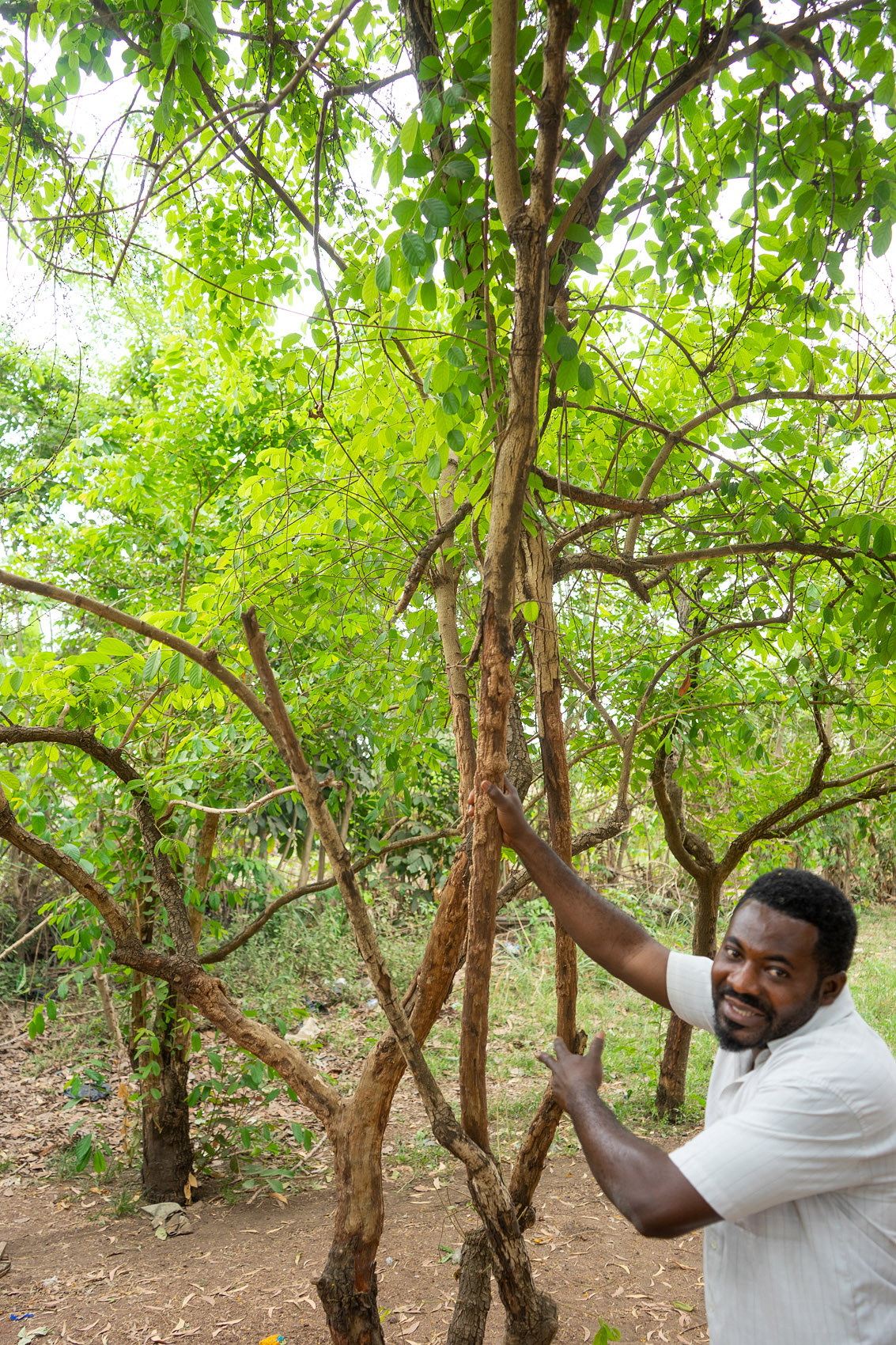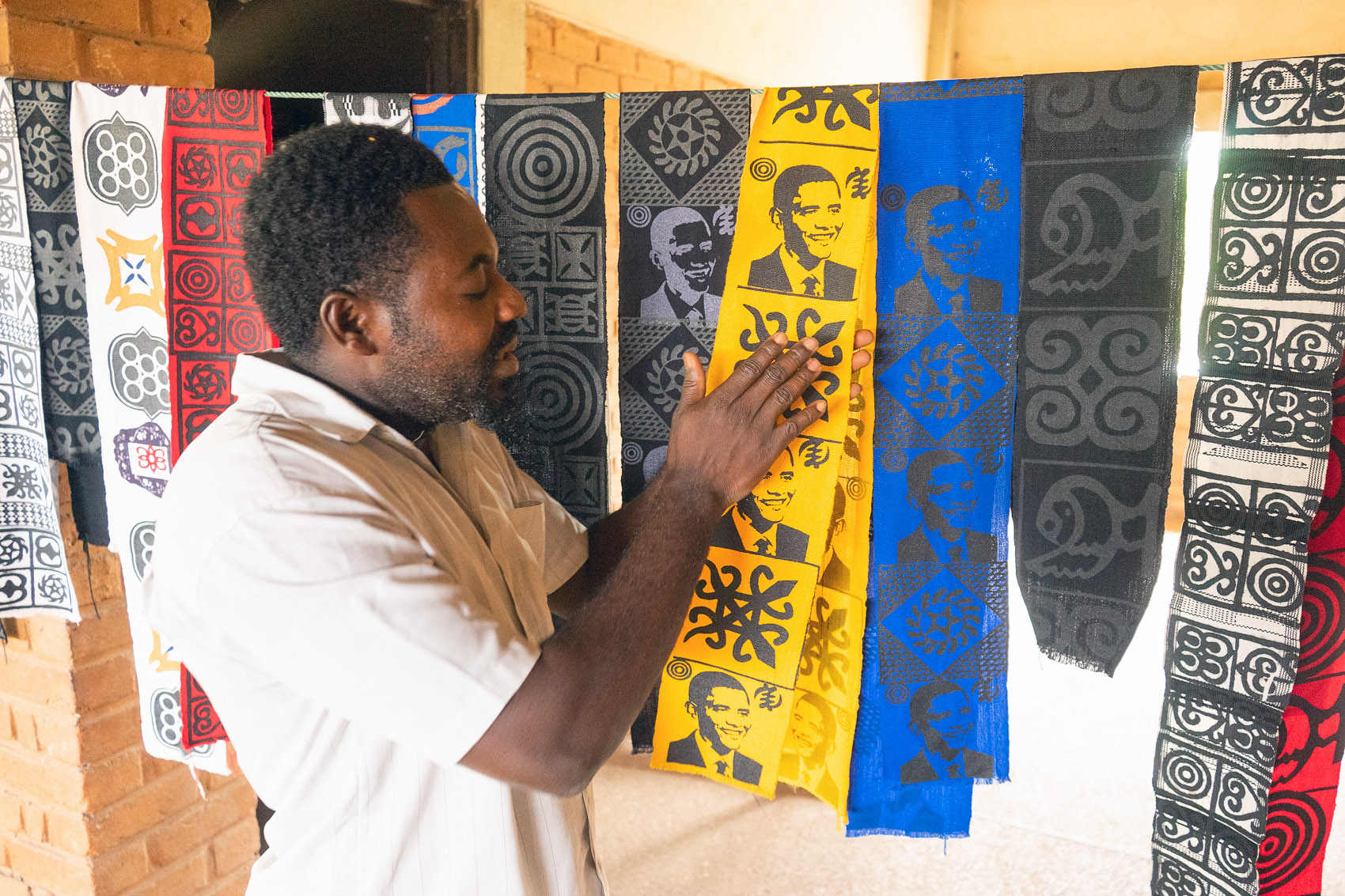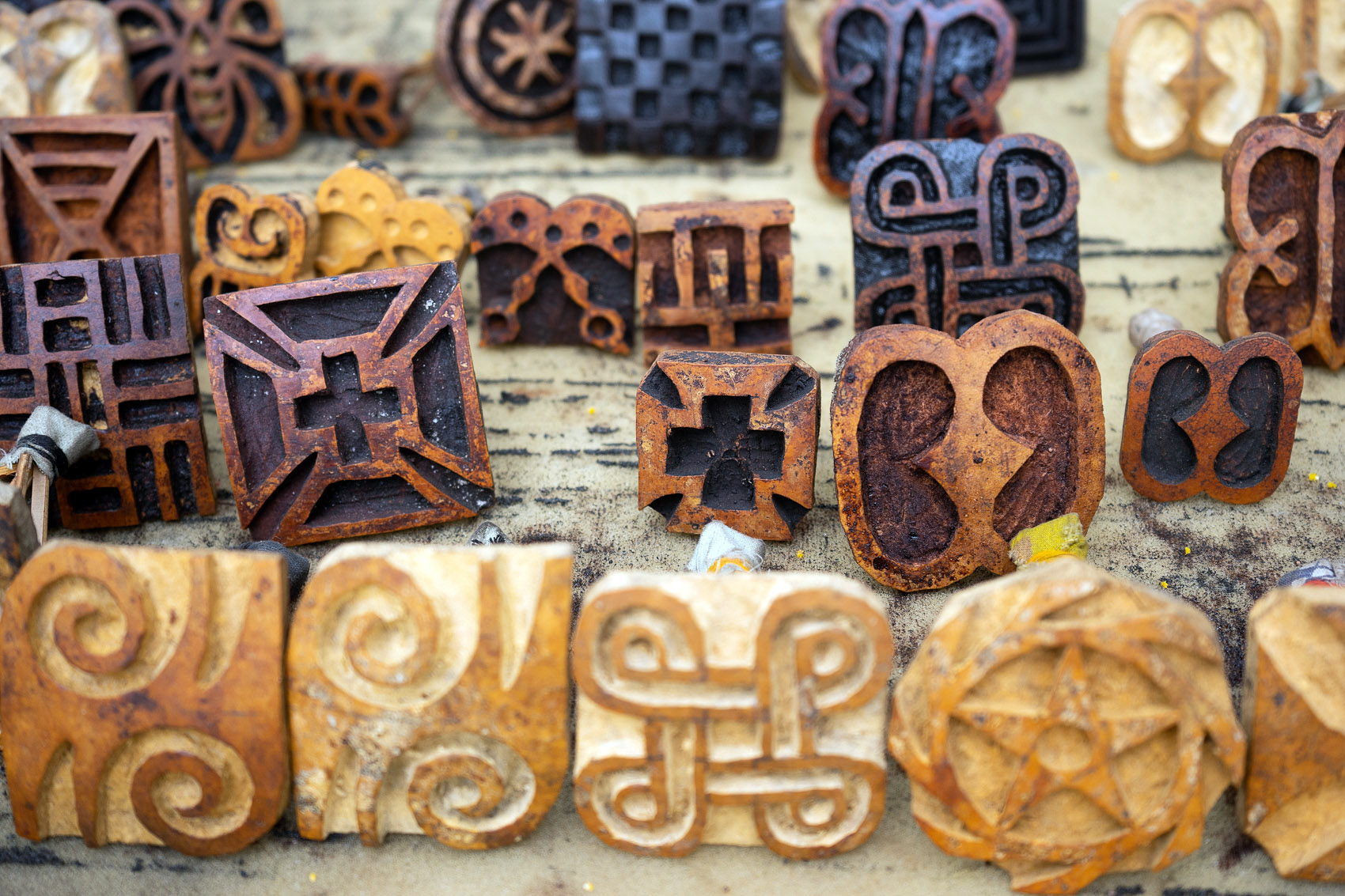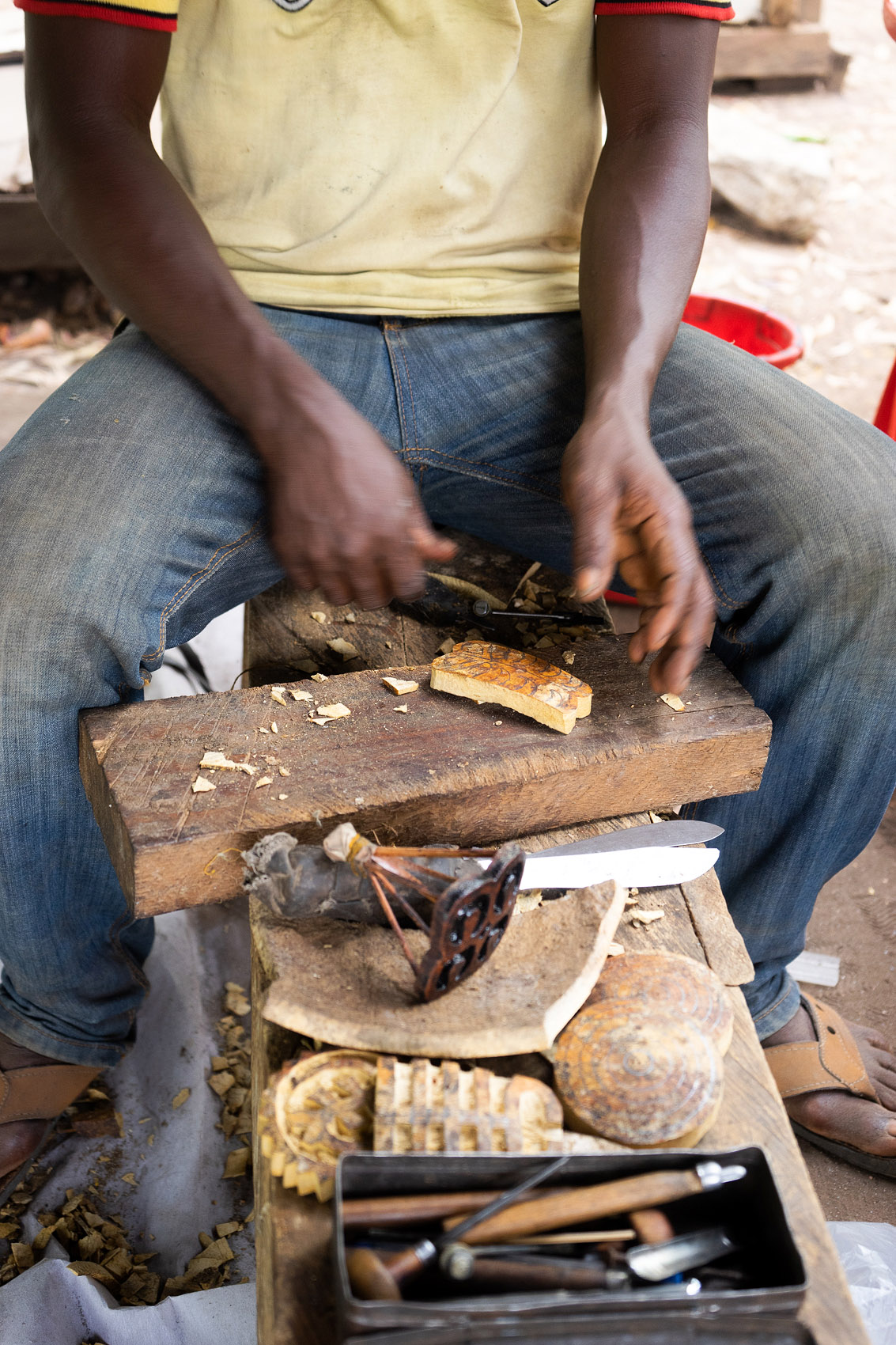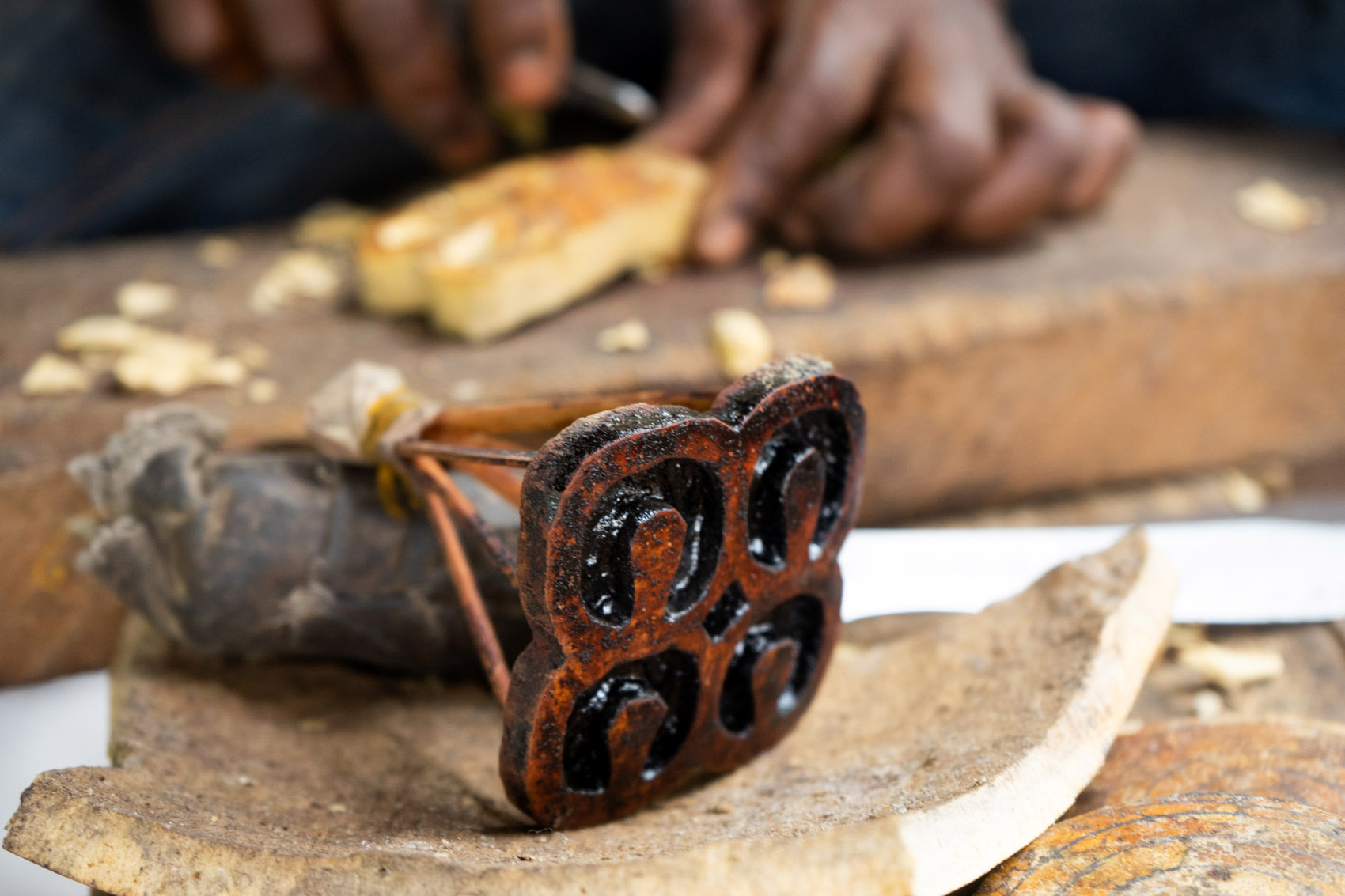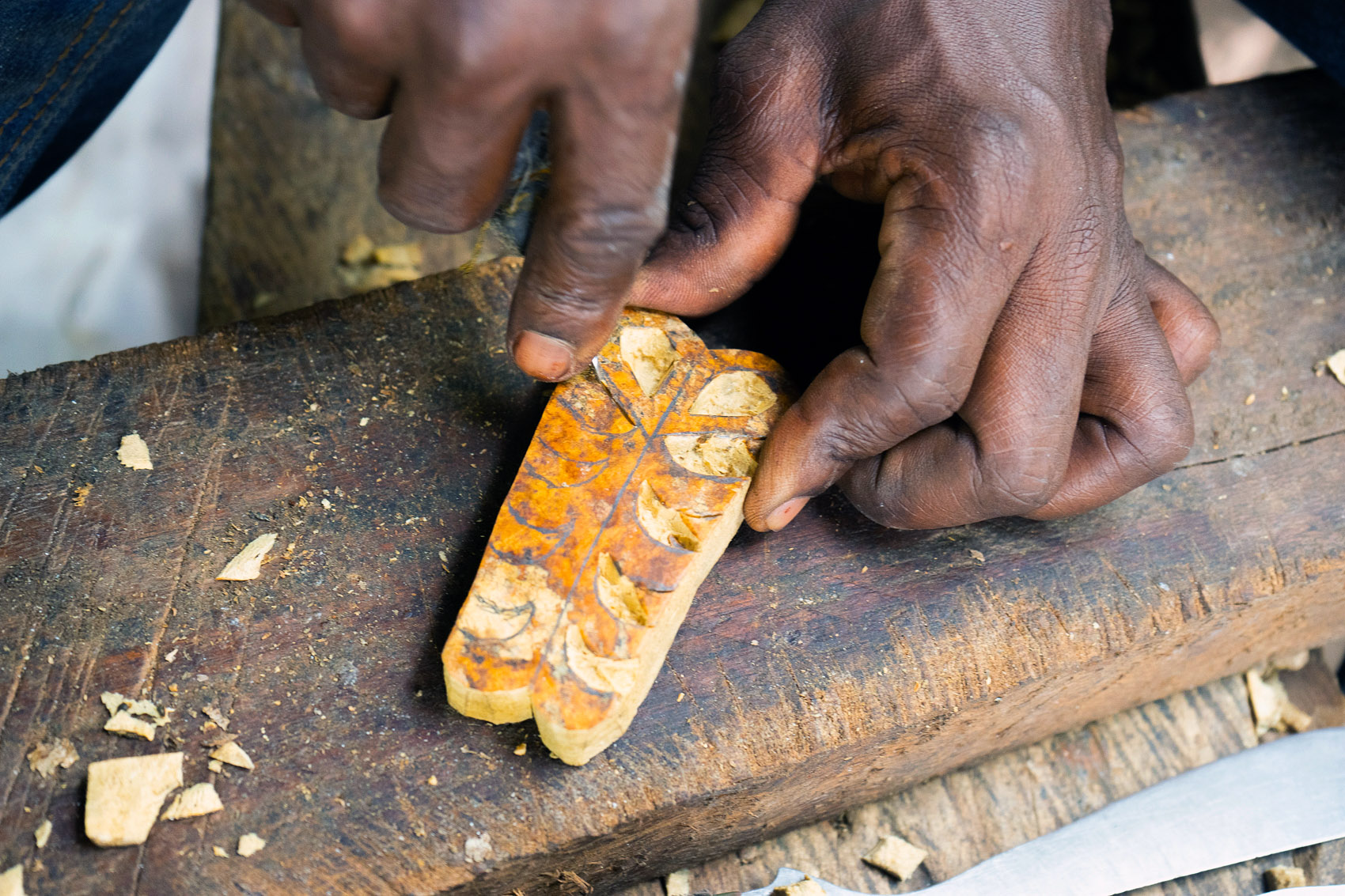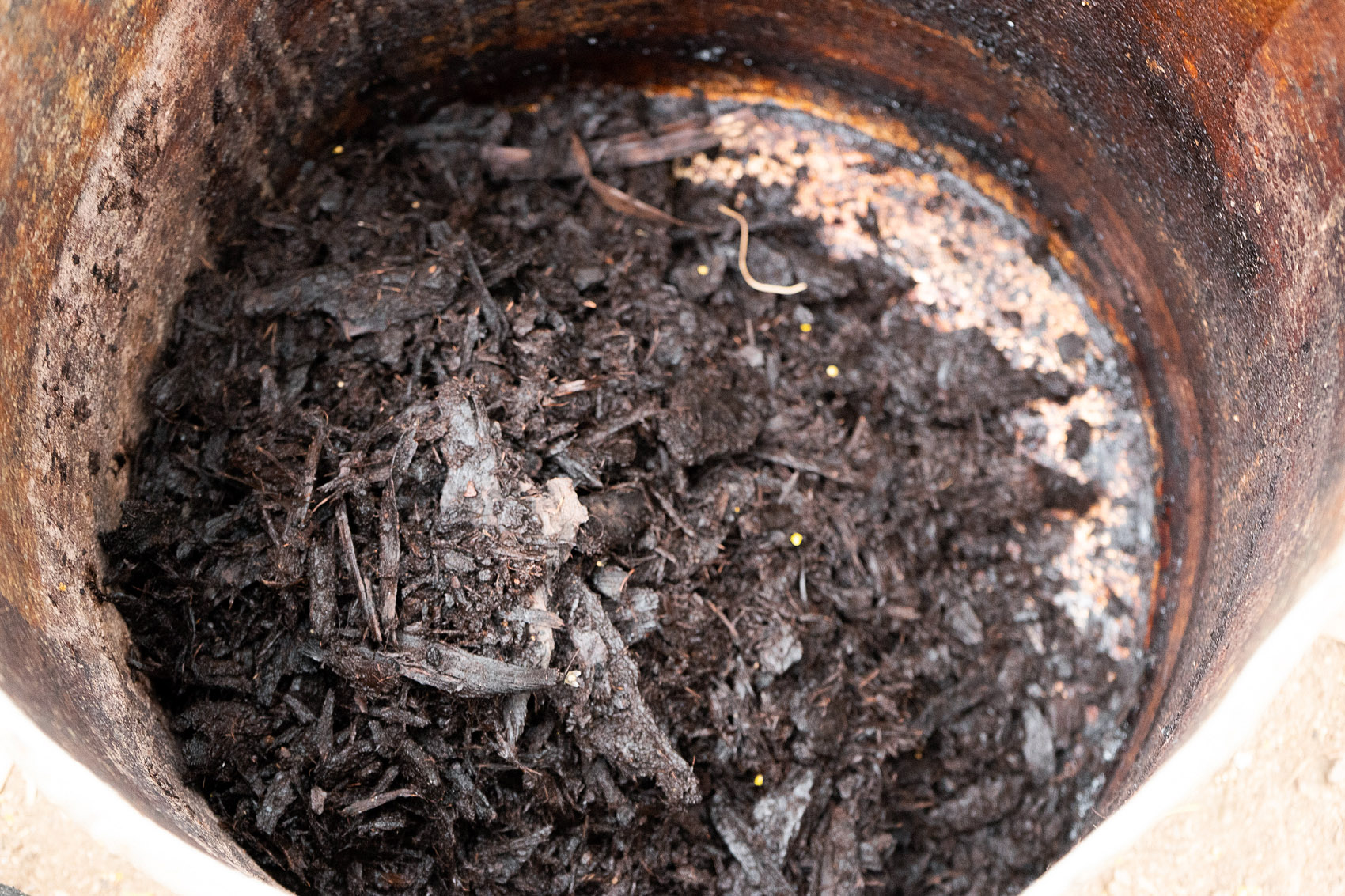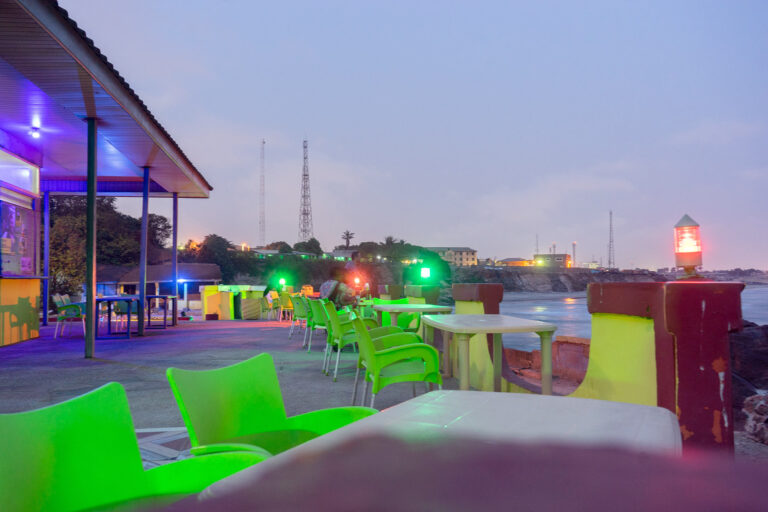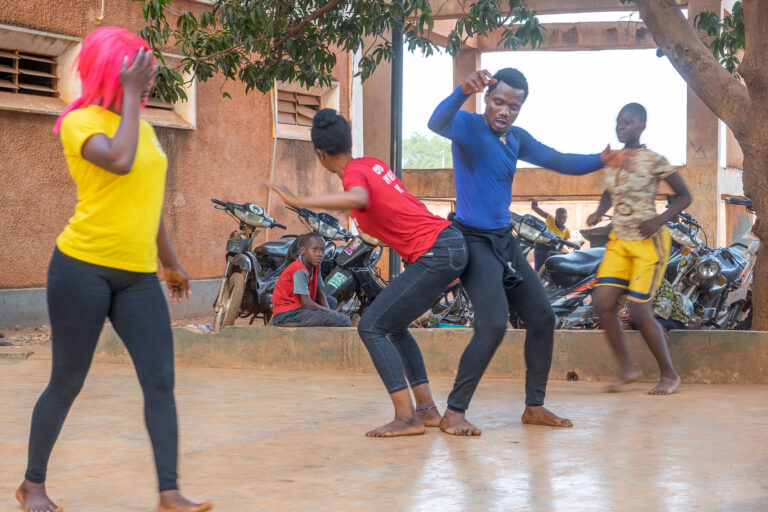Adinkra in Ntonso
It’s impossible to spend any time in Ghana without encountering an Adinkra symbol at least once. These enigmatic patterns are a cultural trademark of the Ashanti people, and can be found worked into textiles, furniture, walls, or anything else that might be improved with symbolic embellishment. We visited the capital of Adinkra production, in Ntonso, near Kumasi.
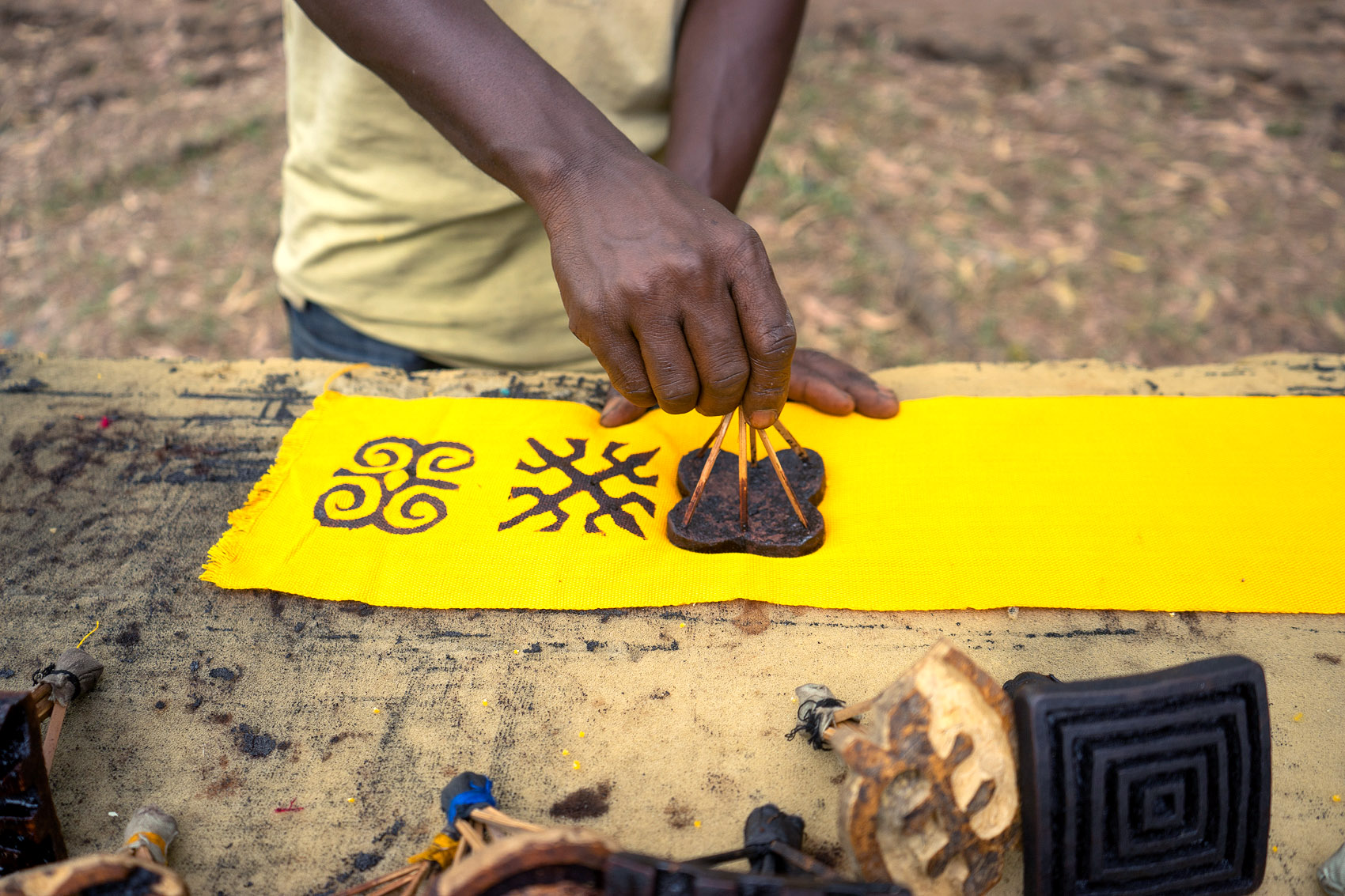
Nobody’s quite sure how long Adinkra symbols have been around, though it stands to reason that they’re as old as (or older than) the Ashanti kingdom. These were royal symbols, stamped into cloth that was only worn by very important Ashanits, on very important occasions. But they’ve since been adopted by Ghanaian society at large, and are now reproduced with pride in a wide variety of places. We even noticed that the lounge in the Accra airport is called the Adinkra Lounge.
There are dozens of symbols, and each means something special. Perhaps the most frequently seen is the “Gye Nyame”, which means “Only God”, and resembles something like a spinal column with pointed horns on either side. There’s also “Dame Dame” which is the name of a board game, and signifies cunning. Adinkra can also have really specific meanings. The “Papani Amma yenhu Kramo”, for example, looks like a looped Gaelic pattern, and means something like “So many people do good things, it’s impossible to distinguish the Muslims”. (Perhaps “Love your neighbor”, more simply.)
In Ntonso, we went straight to the Adinkra Tourism Center, and were introduced to the process during a tour which was sadly all too short. We were shown to the process of stamping the symbols onto cloth, and how the stamps are produced: carved out of calabash gourds, and dipped into a think vegetable dye which has been boiled multiple times. That’s about all there was to the tour. Ten minutes of information about the craft, and then twenty minutes of hard-selling us adinkra cloths and souvenirs.
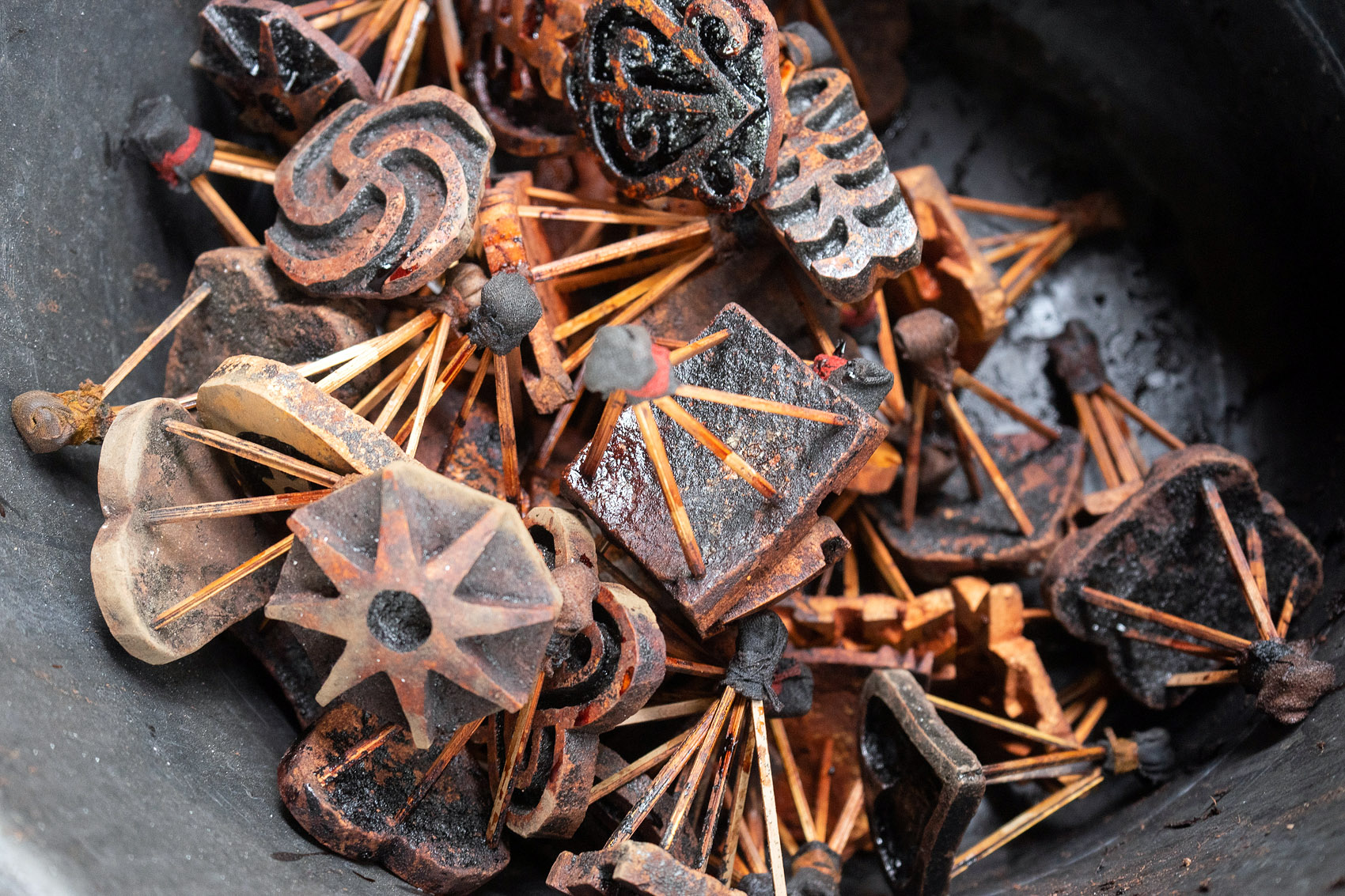
We couldn’t resist buying one of the stamps. The symbol which we chose was one featuring two crocodiles atop each other, forming a cross. They share one stomach, and the meaning is about the importance of cooperation despite your differences — it’s a lesson Jürgen and I have learned many times over, having been together for so long. But it’s always good to have a reminder.
